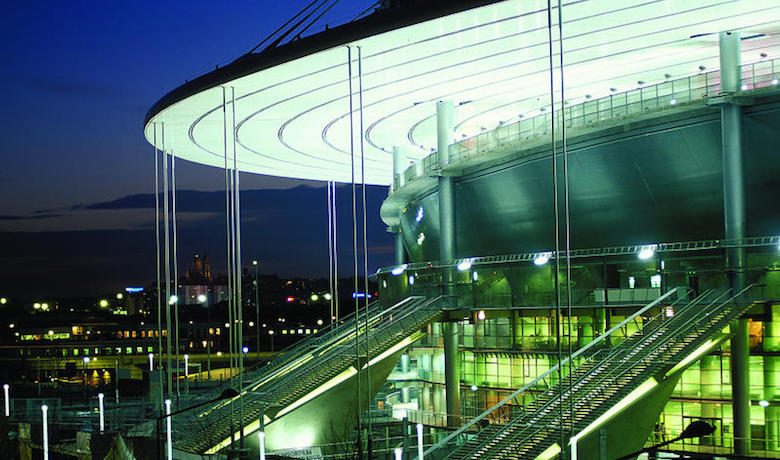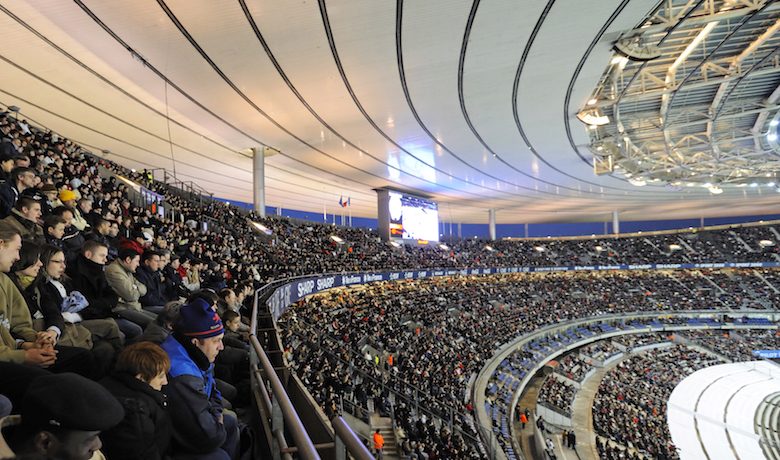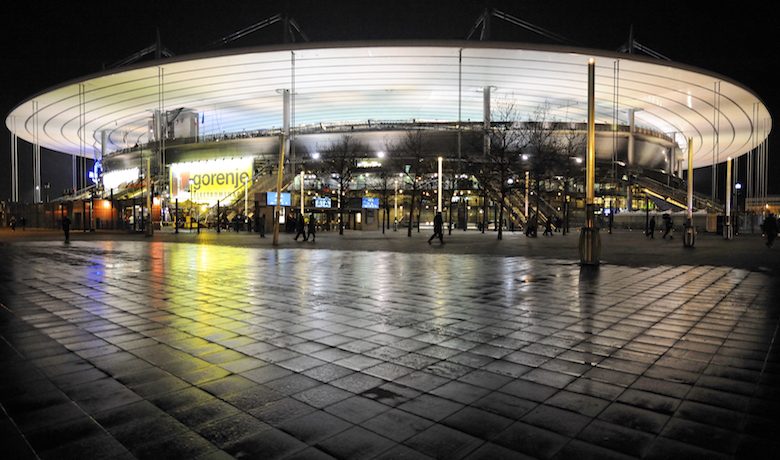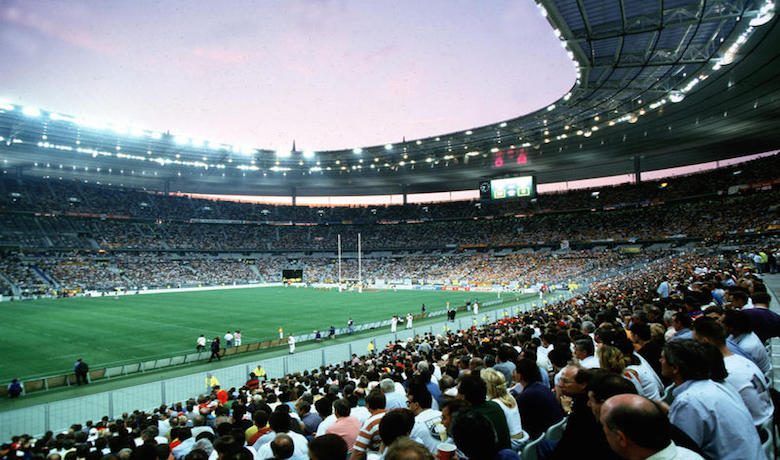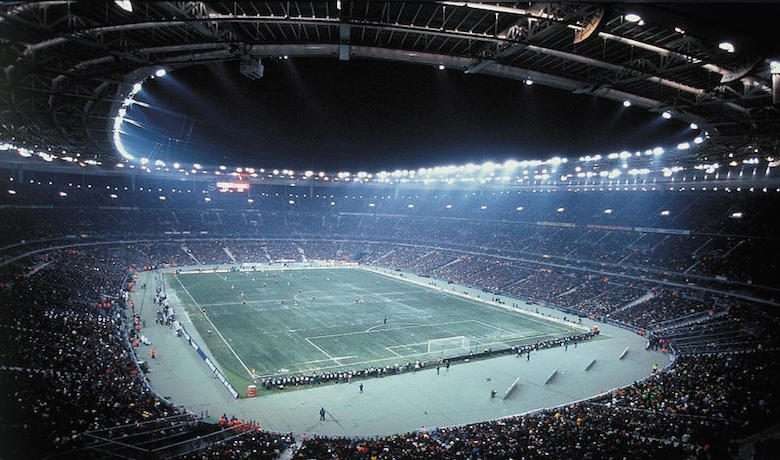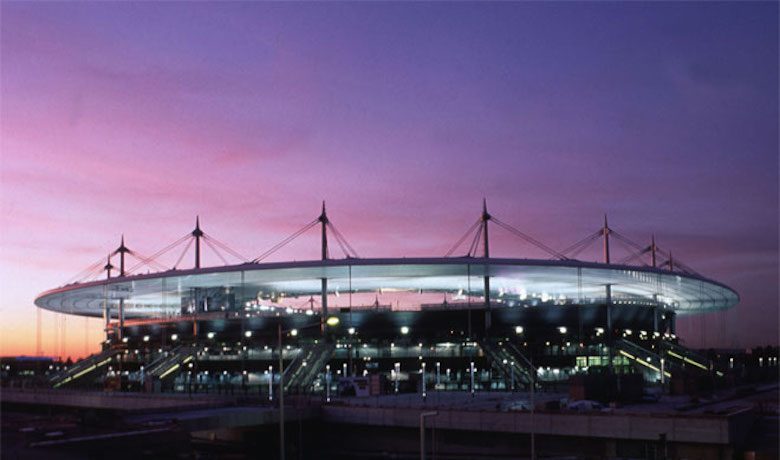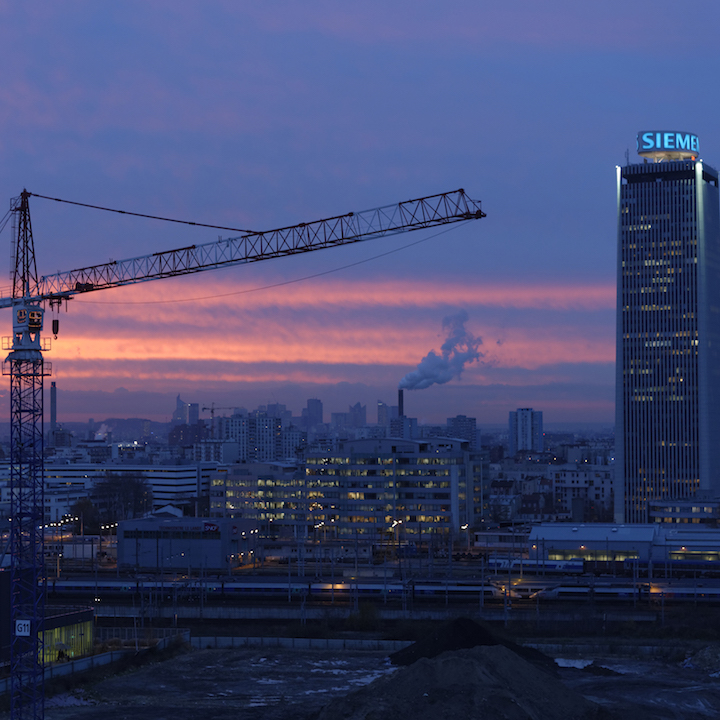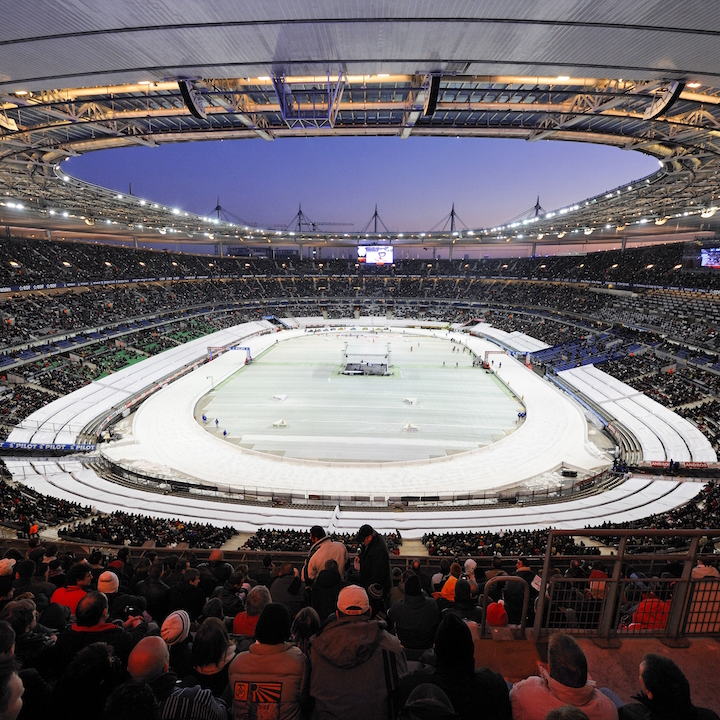TECHNICAL OVERVIEW
The exterior perimeter of the ellipse is 1 kilometre long; the interior perimeter, 400 metres. The roof is suspended on 18 steel masts in the form of javelins. It was designed to withstand winds of up to 145 kilometres an hour, which is stronger than the strongest wind speeds ever recorded in or around Paris. The glass casing is slightly opaque to reduce contrast, ensure spectator comfort, and provide enough sunlight for the grass to grow. All lighting (454 projectors) and sound (36 set of speakers) systems are built into the roof. Stormwater is collected on the roof, without spilling over the perimeter, and evacuated through pipes located inside the masts. The roof covers six hectares (an area as large as Place de la Concorde), including five hectares of total covering and one hectare of glass casing. The teams had to use one of the most powerful cranes on the market to raise the 36 roof components, each weighing 350 tonnes and suspended at a height of 42 metres.
The lawn in the stadium is of high quality and owes its original design to the use of a soil substrate known as Lavaterr, made from volcanic rock. On an initial 10-cm layer of Lavalit volcanic granulate, a second 15-cm substrate was placed, made from crushed volcanic rock, quartz sand, and fertilising material. As a result, the lawn in the Stade de France has outstanding draining, cohesion, and water-retention properties.
Another noteworthy fact about this infrastructure is how quickly it was built. Earthworks operations totalling 800,000 m² were completed in five months, and the 180,000 m³ of concrete required on this project was poured in one year. Technical tasks, including installing the roof and the 25,000-seat mobile capacity were also completed in just one year.


